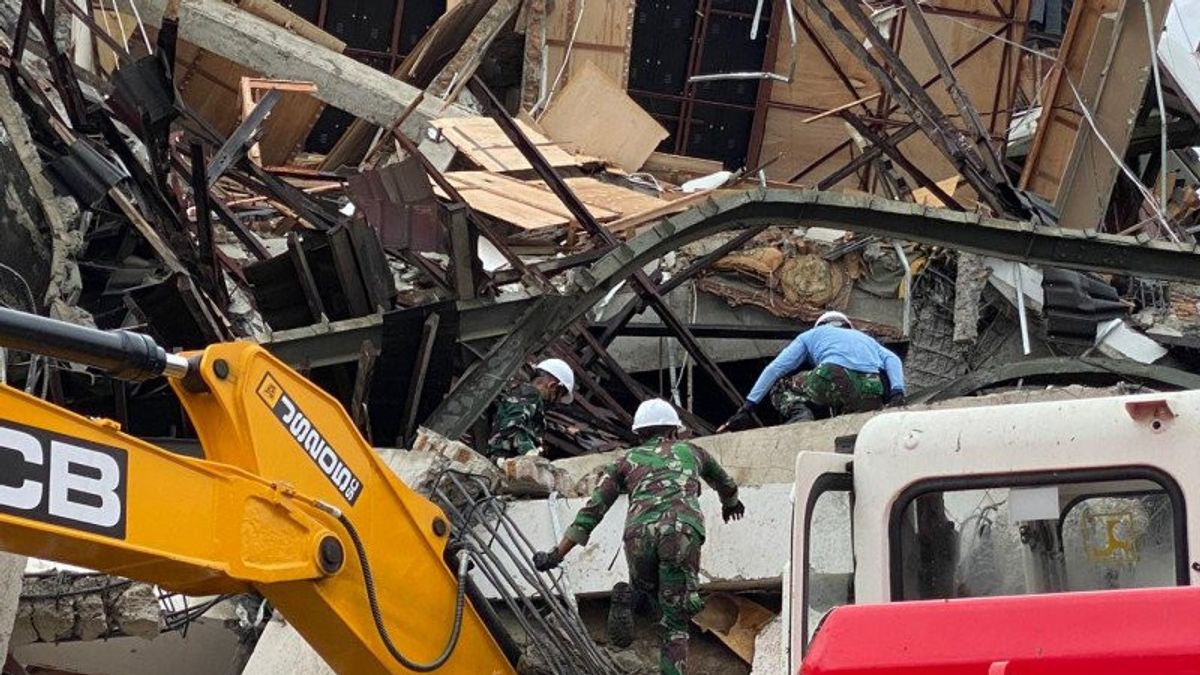JAKARTA - The National Disaster Management Agency (BNPB) appealed to the public to remain calm and alert to the possibility of aftershocks in West Sulawesi.
"The public is advised to remain calm and alert to the possibility of aftershocks of significant strength," said Head of the BNPB Disaster Data, Information and Communication Center Raditya Jati as quoted by Antara, Saturday, January 16.
Raditya said that a significant aftershock could trigger landslide landslides and rockfall debris, so people in hilly areas with steep cliffs need to be vigilant.
Learning from the history of the coast of Majene, West Sulawesi, which was hit by a tsunami wave triggered by an earthquake in 1969, people, especially those in coastal or coastal areas, should be alert. If you feel a strong earthquake, immediately stay away from the beach.
"To continue to raise awareness, the public is also asked not to easily believe all information with unclear sources," he said.
The public is also advised not to believe fake news or hoaxes regarding predictions and predictions of earthquakes that will occur with greater strength and a tsunami will occur.
Meanwhile, the results of the analysis by the Meteorology, Climatology and Geophysics Agency (BMKG) explained that the tectonic earthquake that rocked the Majene region, West Sulawesi, was a type of shallow crustal earthquake caused by active fault activity.
There is also the analysis results obtained by considering the location of the epicenter or epicenter and the depth of the hypocenter, both the first and the second significant earthquake.
"Both the first and second significant earthquakes that occurred were shallow crust earthquakes," said BMKG.
As previously informed, the first earthquake as an opening or foreshock was reported to have occurred on Thursday, January 14 at 13.35 WIB with a magnitude of 5.9 at the epicenter 2.99 South Latitude and 118.89 East Longitude or on land at a distance of 4 kilometers (km) to the West Majene Sea, West Sulawesi, 10 km depth.
Furthermore, the second earthquake or mainshock occurred on Friday, January 15, at 01.28 WIB in the morning with a magnitude of 6.2 at the epicenter of 2.98 South Latitude and 118.94 East Longitude or on land at a distance of 6 km northeast of Majene, West Sulawesi, depth 10 km.
"It is strongly suspected that the trigger for this earthquake was the Mamuju Up Fault," BMKG informed.
This is evidenced from the results of the analysis of the source mechanism which shows that the earthquake has a thurst fault mechanism.
BMKG also said that the upward fault mechanism is similar to the Lombok earthquake that occurred in 2018, in which the fault plane forms the tilt of the fault plane to the mainland.
The Mamuju Ascend Fault is called BMKG has a magnitude with a target of 7.0 with a shear rate of 2 millimeters (mm) per year. Therefore, this active fault must be watched out for because it can trigger strong earthquakes.
The English, Chinese, Japanese, Arabic, and French versions are automatically generated by the AI. So there may still be inaccuracies in translating, please always see Indonesian as our main language. (system supported by DigitalSiber.id)











